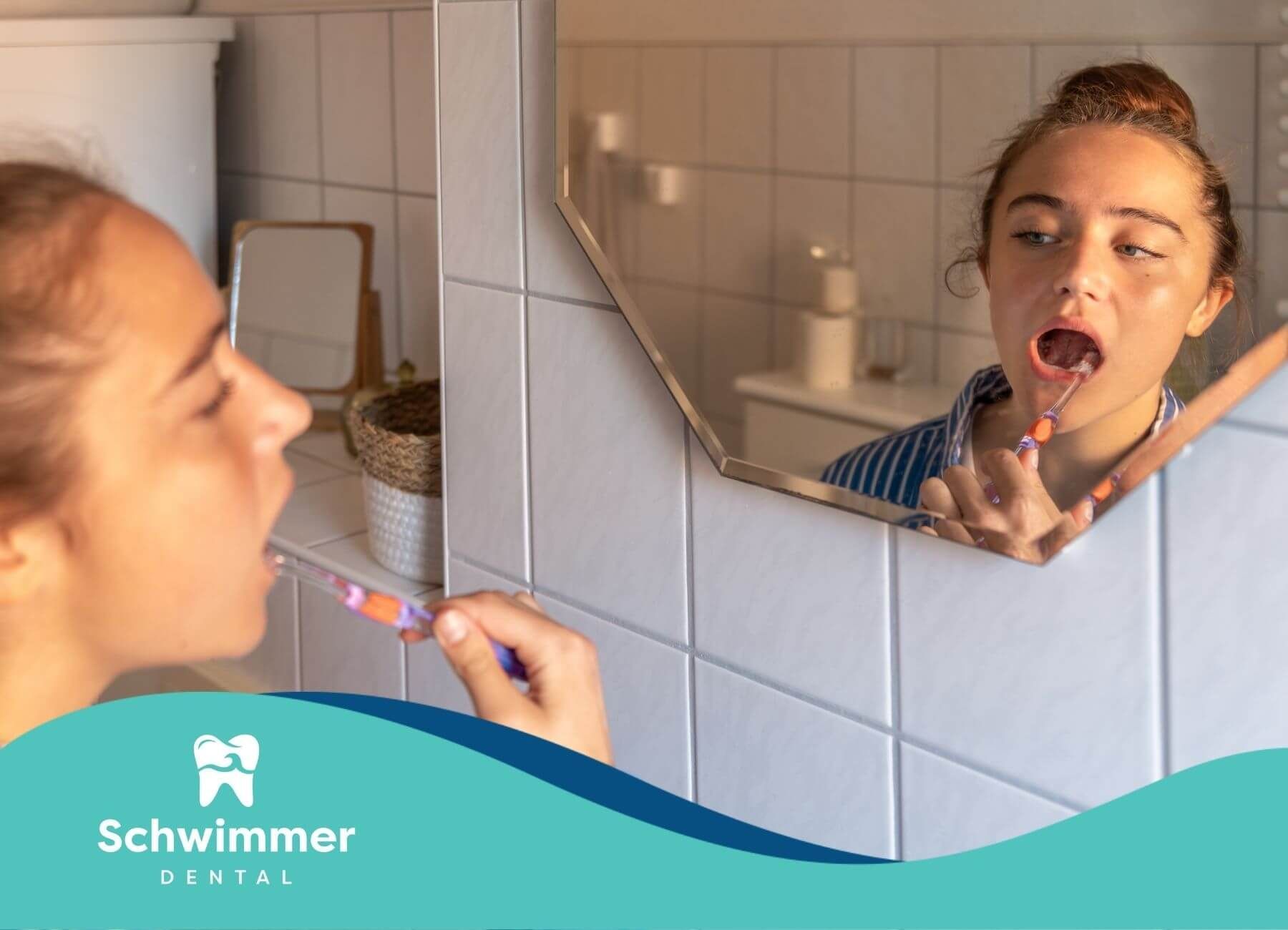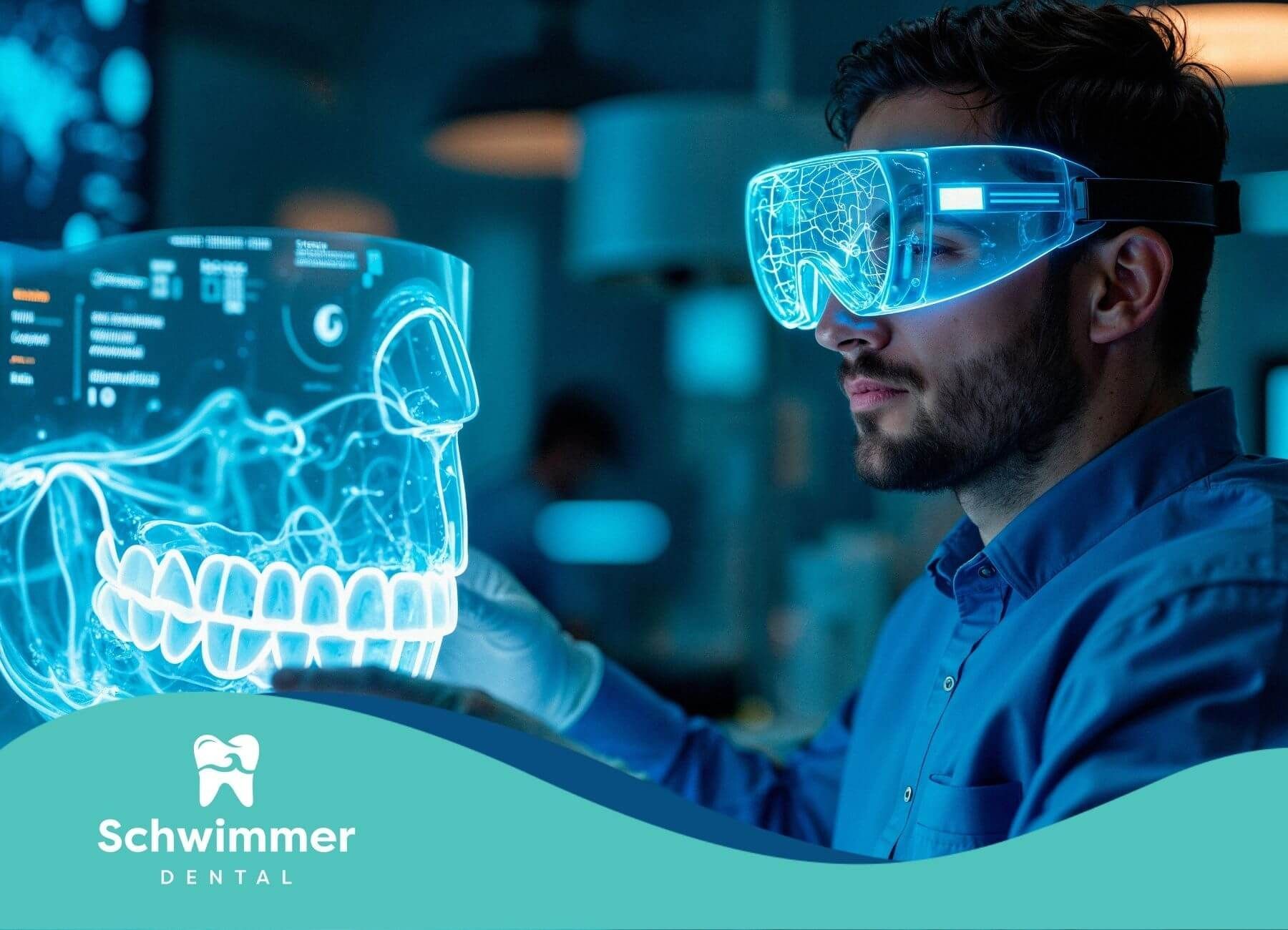Digital Dental X-Ray vs. Normal X-Ray: Which is the Best for Dental Use?
Key Highlights
Here’s a quick look at the key differences between digital dental X-rays and traditional X-rays:
- Digital dental X-rays reduce radiation exposure by up to 90%, making them a safer choice for your oral health.
- The image quality of digital radiography is far superior, allowing for more accurate diagnoses.
- Digital imaging provides immediate results, while traditional film requires time for chemical development.
- Digital files are easy to store and share, improving efficiency in dental care.
- Modern digital systems are eco-friendly, eliminating the hazardous waste associated with traditional X-rays.
Introduction
When it comes to maintaining your oral health, dental imaging is an essential diagnostic tool. In recent years, technology has dramatically changed dental radiography, leading many to wonder about the best approach for their dental care.
The shift from traditional film X-rays to advanced digital imaging has raised questions about safety, accuracy, and efficiency. If you’ve ever compared digital dental X-rays vs. traditional methods, this guide will clarify the key differences and help you understand which is better for you.
Although digital X-rays are becoming increasingly common due to their enhanced safety and efficiency, not all dental clinics have made the switch. Some practices still use traditional film X-rays, often due to equipment costs or specific diagnostic needs. It's best to check with your dental provider to see which technology they use.
Understanding the Types of Dental X-Rays
Dental radiographs, commonly known as X-rays, are crucial for helping dental professionals see what’s happening below the surface of your smile. They provide detailed images of the teeth, jawbone, and surrounding tissues that aren't visible during a routine exam.
Today, there are two primary methods for capturing these images: traditional radiography and digital radiography. While both serve the same fundamental purpose, they operate very differently. Let's explore what defines each of these methods.
What Are Traditional Dental X-Rays?
Traditional dental X-rays use a method that has been a staple in dental care for decades. This technique relies on conventional film to capture images. A small piece of film is placed inside your mouth, and it is exposed to a controlled amount of X-ray radiation to create an image.
After the image is taken, the process isn't over. The film must be taken to a dark room for film development, where it is treated with special chemicals to reveal the picture. This is very similar to how old-fashioned photographs were developed.
While this method provides dental professionals with valuable information about your teeth and jaw, it comes with certain drawbacks. The process is time-consuming, involves higher radiation exposure compared to modern alternatives, and the resulting image quality is fixed and cannot be adjusted.
What Are Digital Dental X-Rays?
Digital dental X-rays represent a major technological leap in dental imaging. Instead of film, this method of digital radiography uses a small electronic sensor placed in your mouth. This sensor captures detailed dental images and instantly sends them to a computer.
The real advantage of digital imaging is what happens next. The dental images appear on the screen in seconds, where your dentist can view, enlarge, and adjust them for better clarity. This ability to manipulate the image helps in making a more precise diagnosis. Have you ever wondered if you could see your X-ray up close? With digital, you can.
These images are saved as digital files, making them easy to store and share with specialists if needed. More importantly, digital X-rays require significantly less radiation to produce a high-quality image, making them a safer option for patients.
Comparing Image Quality and Diagnostic Capabilities
One of the most critical factors in dental radiography is the ability to produce a clear, detailed image. High image quality directly translates to better diagnostic accuracy, allowing your dentist to spot problems early. This is where the differences between digital imaging and traditional methods become very apparent.
The ability to adjust contrast levels and zoom in on specific areas gives digital X-rays a distinct edge. Let’s look closer at how the clarity of digital images compares to the limitations of traditional film.
Clarity and Detail in Digital X-Rays
Digital technology provides exceptionally detailed images that significantly enhance diagnostic precision. When the digital images appear on a computer screen, your dentist can use software to get a much closer look at your teeth and bones.
This capability is a game-changer for spotting subtle issues. For instance, your dentist can zoom in on a suspicious spot, adjust the brightness, or change the contrast to determine if it’s an early-stage cavity. This level of detail is simply not possible with a static film X-ray.
The advantages of digital images include:
- Image Enhancement: Adjusting brightness and contrast to reveal decay or bone loss.
- Zoom Capabilities: Magnifying specific areas for a more detailed examination.
- High Resolution: Capturing clear, sharp images for superior diagnostic precision.
Visualization Limits of Traditional X-Rays
While traditional film has been a reliable diagnostic tool for many years, it has notable limitations in image quality. Once a film X-ray is developed, the image is final. The contrast levels and brightness are fixed, and there is no way to enhance the picture to see things more clearly.
This static nature can sometimes hinder a diagnosis. If an X-ray is too dark or too light, it may need to be retaken, exposing you to more radiation. Furthermore, subtle problems like tiny fractures or the early signs of decay might be difficult to spot with the naked eye on a small piece of film.
Because the image cannot be magnified or adjusted, the dentist is relying solely on what is immediately visible. This can sometimes mean that developing issues are missed until they become more significant problems.
Patient Safety and Radiation Exposure
A common concern for patients undergoing dental care is radiation exposure. While the amount of radiation in dental X-rays is generally low, minimizing it is always a top priority for both patient care and the safety of the dental staff. The choice between digital and traditional systems plays a significant role in this.
Modern technology has made it possible to achieve lower radiation exposure without sacrificing image quality. Let's examine how digital X-rays offer a safer experience and what considerations exist for conventional film.
Lower Radiation with Digital Dental X-Rays
One of the most compelling benefits of digital systems is that they use significantly less radiation. Digital sensors are more sensitive than traditional film, so they can capture a high-quality image with a much lower dose of radiation—up to 90% less in some cases.
This drastic reduction makes digital X-rays a much safer option for your oral health. The low radiation dose is especially important for patients who may need frequent X-rays to monitor ongoing conditions, as well as for children and pregnant individuals.
Key safety benefits of less radiation include:
- Reduced Lifetime Exposure: Minimizing the cumulative amount of radiation a patient receives over time.
- Safer for Sensitive Patients: A better choice for children, pregnant women, and those with certain health conditions.
- Fewer Retakes: Instant image review means fewer errors and less need for repeated exposure.
Safety Considerations for Conventional Film X-Rays
Although the radiation levels from a conventional film X-ray are relatively low and often compared to the amount of background radiation you receive from natural sources, they are still higher than with digital X-rays. Dental professionals always take precautions to protect you, such as using a lead apron to shield your body.
However, a key issue with traditional X-rays is the potential for unnecessary radiation. If there is an error during the film development process or the initial image is not clear, the entire X-ray must be retaken. This doubles the radiation exposure for that specific image.
These retakes can add up, increasing the total amount of radiation you receive. The goal in modern dentistry is to get the diagnostic information needed with the absolute minimum exposure, which is a challenge that conventional film sometimes fails to meet.
Efficiency, Comfort, and Convenience in the Dental Office
Your experience at the dental office is shaped by more than just the treatment itself. The efficiency of the workflow, your comfort during procedures, and overall convenience are all important. Digital imaging has transformed the patient experience by streamlining the X-ray process.
From the moment you sit in the chair, the differences in speed and comfort between digital and traditional methods are clear. Let's compare how these two technologies impact appointment times and your overall visit.
Speed and Workflow Differences Between Digital and Conventional X-Rays
The most noticeable difference for patients is the speed. With digital technology, your X-ray images are available for review almost instantly. This means less time spent waiting in the dental chair and a quicker diagnosis from your dentist.
In contrast, conventional X-rays require a multi-step workflow that includes chemical film development in a dark room. This process can add several minutes to your appointment, delaying diagnosis and treatment planning. For busy dental offices, the immediate results of digital X-rays streamline the entire workflow.
This table highlights the workflow differences:
| Feature | Digital X-Rays | Conventional X-Rays |
|---|---|---|
| Image Capture | Electronic sensor captures image in seconds. | Film is exposed to radiation. |
| Processing Time | Immediate results on a computer screen. | Requires several minutes for chemical development. |
| Retakes | Can be done instantly if needed. | Requires repeating the entire capture and development process. |
| Diagnosis | Allows for immediate review and consultation. | Patient must wait for film to be developed and reviewed. |
Cost-Effectiveness and Accessibility for Patients
When considering different types of dental care, cost is often a factor for patients. You might wonder if the advanced technology of digital dental radiographs comes with a higher price tag. The cost-effectiveness of these systems involves both the initial investment for the dental practice and the long-term expenses for patients.
Ultimately, the goal is to receive the best care without creating a financial burden. Let's look at how upfront costs compare to long-term savings and what you can expect regarding insurance coverage.
Upfront Costs vs. Long-Term Savings
For a dental practice, the initial or upfront costs of switching to digital systems are high. Digital X-ray machines are a significant investment compared to traditional equipment. This initial expense can sometimes be a barrier for smaller dental offices.
However, these upfront costs are offset by significant long-term savings. With digital imaging, a practice no longer needs to purchase film, processing chemicals, or materials for storing physical X-rays. Over time, these savings can be substantial.
The long-term benefits include:
- No ongoing costs for film and development chemicals.
- Reduced waste and disposal fees for hazardous materials.
- Elimination of physical storage needs for digital files.
These savings help make digital technology a sustainable choice for dental practices in the long run.
Insurance Coverage and Patient Expenses
From a patient's perspective, the cost of a digital X-ray is typically comparable to that of a traditional one. Most dental insurance plans provide coverage for routine dental radiographs, regardless of the technology used. Therefore, your out-of-pocket patient expenses are unlikely to change much.
The true value for you as a patient comes from the added benefits. You receive faster, more accurate diagnoses and are exposed to less radiation, all for a similar cost. This makes digital X-rays a more cost-effective choice for your overall dental care.
Better diagnostic tools also lead to more precise treatment planning. By catching problems earlier, digital X-rays can help you avoid more complex and expensive procedures down the road, saving you money in the long term.
Key Benefits and Limitations: Digital vs. Traditional X-Rays
We've explored the key differences in safety, quality, and efficiency between digital and traditional dental imaging. While modern imaging technology offers clear advantages, it's helpful to summarize the unique benefits of digital radiography and understand why some practices might still use traditional methods.
This comparison can help you appreciate why so many dental professionals are embracing digital tools to diagnose oral health conditions and why the transition is not yet universal.
Advantages Unique to Digital Dental X-Rays
Digital technology offers several powerful advantages that go beyond just taking pictures. The ability to instantly view and manipulate the images of your teeth allows for better communication between you and your dentist, helping you understand your treatment plans.
Another major benefit is the portability of digital files. If you need a referral to a specialist, your X-rays can be sent electronically in seconds, ensuring a seamless continuation of care. This removes the hassle and delay of mailing physical films.
Unique advantages of digital imaging include:
- Enhanced Patient Education: Clear, visible images help you see what the dentist sees.
- Easy Sharing and Collaboration: Digital files can be emailed securely to specialists or other providers.
- Improved Record-Keeping: Images are stored electronically in your patient file for easy access and comparison over time.
Why Some Dentists Still Use Film-Based Systems
Despite the clear benefits of digital technology, some dental offices continue to use traditional film. One of the biggest reasons is the high initial purchase cost of digital X-ray machines. For some practices, this investment can be a significant financial hurdle.
Another factor is the existing workflow. Dental professionals who have used conventional film for their entire careers are often very comfortable with the film development process. Switching to a digital system requires learning new software and adapting to a different workflow, which involves a learning curve for the entire staff.
While the long-term benefits are undeniable, the combination of high upfront costs and the effort required to transition can lead some dentists to stick with the familiar film-based systems they have trusted for years.
Conclusion
In conclusion, the debate between digital dental X-rays and traditional film X-rays highlights significant differences in image quality, patient safety, efficiency, and cost-effectiveness. Digital X-rays often provide clearer images with lower radiation exposure, making them a preferred choice for many dental practices.
However, traditional X-rays still hold value in certain situations where specific diagnostic needs arise. Understanding these differences can empower you to make informed choices about your dental care.
Schwimmer Dental stands out as one of the most trusted dental clinics in New Jersey, offering advanced diagnostic care with the latest digital dental X-ray technology. Their experienced team focuses on precision, comfort, and long-term oral health, making every visit stress-free and informative.
Whether it’s a routine checkup or a detailed diagnostic procedure, Schwimmer Dental combines modern imaging tools with personalized care to help patients make confident decisions about their smiles. Book your appointment today and experience dental care that truly puts your comfort and health first.
Frequently Asked Questions
Can digital dental X-rays reveal issues traditional X-rays might miss?
Yes. The high resolution and enhancement tools of digital dental X-rays allow dentists to zoom in and adjust contrast, improving diagnostic accuracy. This makes it easier to detect subtle problems like early-stage cavities or minor bone loss that might be missed on a static traditional X-ray film.
Is there a difference in patient comfort between digital and film X-rays?
While some patients find the rigid digital sensors slightly bulkier than flexible film packets, the speed of digital imaging greatly enhances overall patient comfort. The process is much faster, meaning the sensor is in your mouth for less time, which improves the patient experience in the dental office.
Are digital dental X-rays more environmentally friendly than conventional X-rays?
Absolutely. Digital systems are much more eco-friendly. They eliminate the need for the chemical solutions used in film development, which contain hazardous materials that are harmful to the environment. This significantly reduces the environmental impact of dental imaging by eliminating chemical waste.



